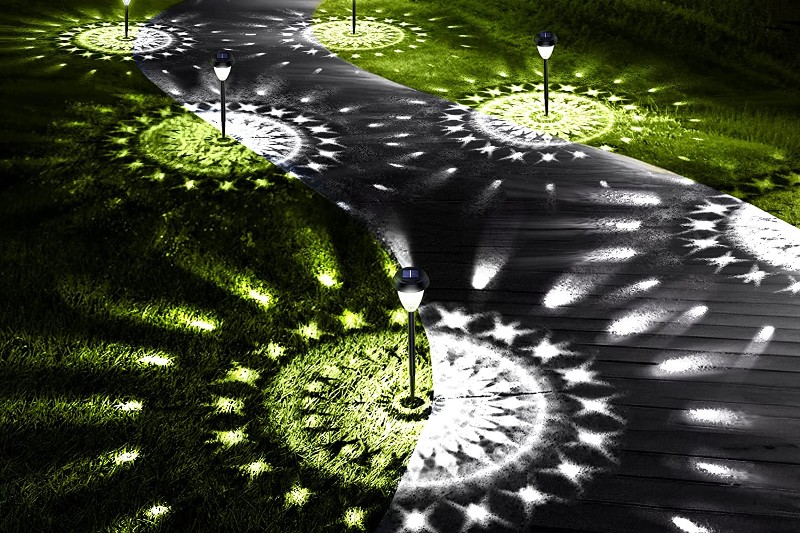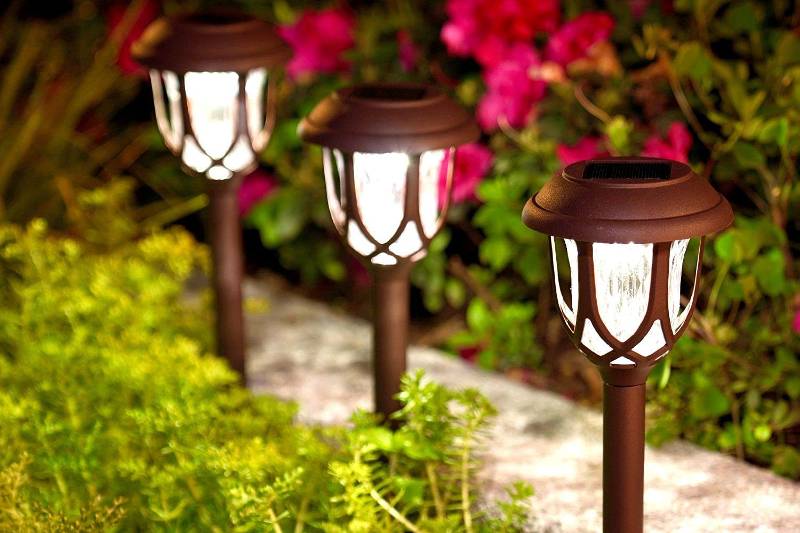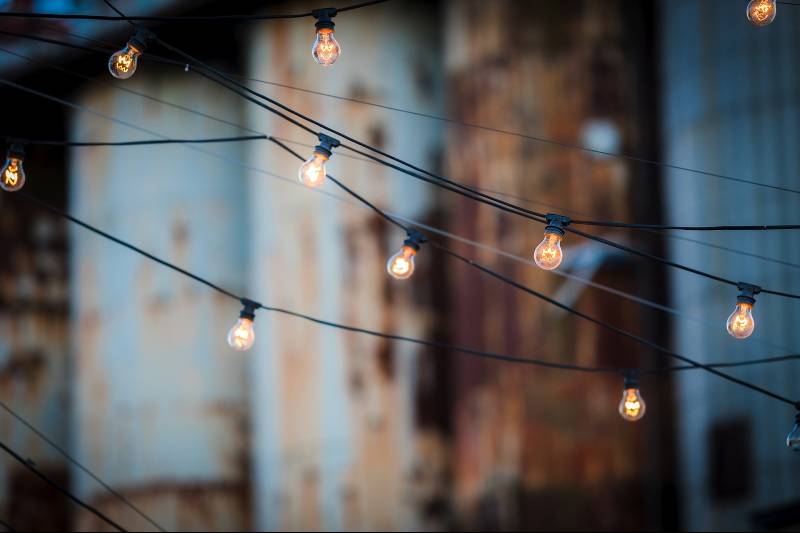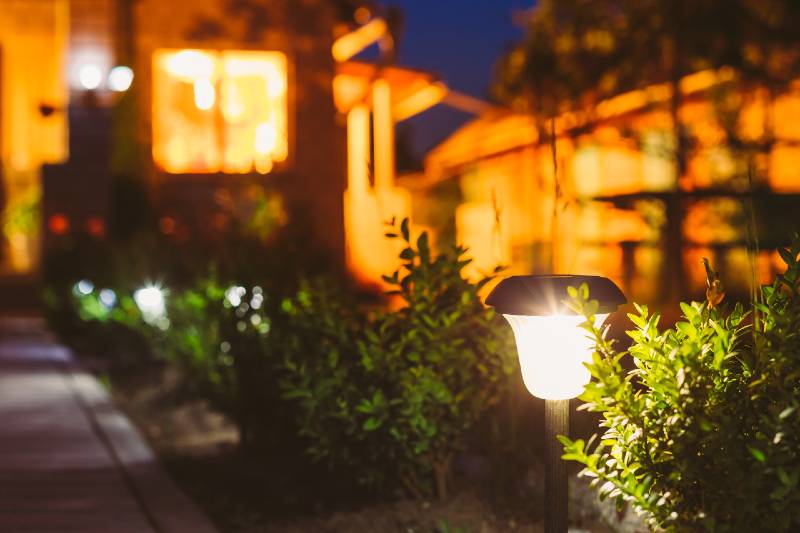If you recently bought some solar powered LED lights, then you must be wondering how long do solar lights last.
Well, if you are looking for an in-depth answer, then this article is specially made for you.
In this article, we will cover how long solar outdoor lights last, how long it takes them to charge, and how many hours will they stay on.
So without further ado, let’s jump right into it.
How Long Do Solar Lights Last?
The short answer is 1-5 years depending on many factors such as weather, quality, usage, and many more.
However, to properly answer your question, here is a list of the life expectancy of the 3 main solar lights components:
A. How Long Do Solar Panels Last?
Solar LED Lights’ panels lose their efficiency over time depending on 3 factors: usage, conversion efficiency, and efficiency loss per year.
For example, a Monocrystalline Panel has a conversion efficiency of around 23.54% and an average output loss of 0.8% a year. This means that within 29.3 years, these solar panels will be dead.
Generally speaking, most solar panels last between 10-30 years before they become useless.
solar panels
B. How Long Do solar lights Batteries Last?
On average, your outdoor solar lights battery can last about 1-5 years before you need to replace them.
The lifespan of the solar light battery is determined by the number of the charge cycles. In other words, how many times you fully charged then discharged the battery.
Different batteries have different life cycles. For example, Lithium-ion batteries can last up to 1000 Cycles while Nickel-cadmium batteries can last up to 1500 cycles.
It’s important to mention that although Nickel-cadmium batteries last up to 1500 cycles, it suffers from memory loss, which means that the battery will lose its charging capacity over time.
For instance, a 1500 mAh Nickel-cadmium battery will only be able to hold 1000 mAh of charge over time and so on.
C. How Long Do Light Emitting Diodes (LEDs) Last
LEDs have a life expectancy of 50,000 working hours, so if we assume your solar powered lights will work 8 hours a day. That leaves you with an expected lifespan of 17 years.
How Long Do Solar Lights Stay On At Night
On average, solar powered lights take around 4-8 hours to fully charge and will last for 6-12 hours depending on many factors such as:
- How many hours of direct sunlight do they get during the day
- How intense is the sunbeam
- Solar panels efficiency
- Battery capacity
- LED wattage (total light output)
Related Article: How Do Solar Lights Turn On Automatically At Night?
How To Make Solar Lights Last Longer?
1. Place Your Solar Lights In A Sunny Spot
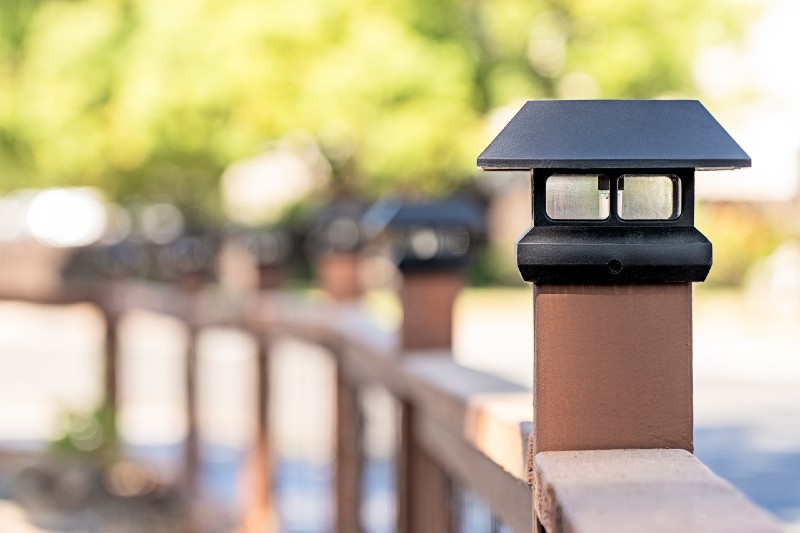
If your solar lights are a car, then sun rays would be the fuel.
As you know, solar lights work by converting sunlight into electricity, and the more sunlight your light gets, the more electricity it will produce and the longer your solar lights will last at night.
So the first tip to make your solar lights last longer is to install them in a place where they get an adequate amount of direct sunlight without shading.
Don’t get me wrong, solar lights can charge in the shade. However, it just won’t be as efficient as charging in direct sunlight.
Related article: Can Solar Lights Charge In Shade?
2. Adjust Your Solar Light’s Panel Direction
Every day the sun rises from the East, peaks at South during midday till it finally sets in the West.
Why is this important?
Well, this is particularly important because we need to track the sun, so we can point our solar lights to the direction where it faces the sun for the longest period during the day, which is True South for people who live in the Northern hemisphere.
On the other hand, if you live in the Southern Hemisphere, then you should make your solar lights face True North for maximum sunlight exposure.
So, if you want to increase the number of hours your solar lights lasts, then make sure to adjust your light’s direction.
3. Adjust Your Solar-Panel Angle
Believe it or not but your solar light angle also plays a role in the amount of direct sunlight your solar-panel gets.
This is because your panel’s output is at its maximum when the sun is directly vertical to it. For this reason, we need to adjust the panel angle so it makes a 90-degree angle with the sun.
I know this might not sound like a big deal but in fact, doing a simple thing like adjusting your solar-panel angle can decrease your panel’s temperature and increase its output.
To make your life easier, analyzed weather data for the past decade and put together this amazing table of the best solar-panel angle:
| Season | Northern Hemisphere Angle |
|---|---|
| Winter | 60 |
| Spring | 45 |
| Summer | 20 |
| Autumn | 45 |
4. Clean Your Solar Panel
Sometimes small debris and dust can build up on your solar-panel, decreasing the light receiving area and reducing the solar panel’s output.
However, this is not the only problem. In fact, the real problem is that these small, harmless particles can cause a shading effect.
In simple terms, because solar cells are connected in serial, even a small shading on one of the cells can reduce the total row output by up to a third.
So to make sure your solar light will last longer, just grab a damp piece of clothing and gently clean the panel once every 2-3 months.
5. Recalibrate Your Battery
Let’s face it, most of the time the solar-panel won’t be able to fully charge your light’s battery.
While it’s a good thing to not fully charge your battery, it’s actually recommended to fully drain the battery and give it a full charge once every 2 months to keep the battery healthy and prolong its lifespan.
Here is how to calibrate your solar light’s battery:
- Keep your solar light in a dark room till it fully drain the battery
- Turn the light switch off
- Keep the solar light in direct sunlight for 2-3 days without using
- Enjoy your callibrated solar light
6. Check The Wire Between The Panel And The Battery Holder
Sometimes the wire connecting the solar-panel and the battery can be a bit loose or displaced because of dust and water buildup.
This loose wiring can be the reason why your solar lights don’t last all night, as if the solar-panel wire is not properly insulated, it won’t be able to efficiently transport all the electricity to the battery.
And as a result, a lot of produced energy will be lost and the solar-panel won’t be able to fully charge your battery.
For this reason, if your solar light’s running time suddenly dropped, then you should definitely check the wiring.
Related article: How To Fix Solar Lights
7. Replace Your Battery
As mentioned before, batteries have a lifespan and for solar lights batteries, the average lifespan is 1-5 years depending on the battery type and manufacturing quality.
If your solar lights are quickly running out of charge even after a full day of direct sunlight, then this could be an indicator of a bad battery. In this case, you should replace your batteries with new ones.
Just make sure your new battery matches your solar light’s Voltage and Current specifications or it won’t work.
Related article: Can I Use Higher mAh Battery In Solar Lights?
FAQs
1. How Long To Charge Solar Lights?
On average, solar lights need around 6 to 8 hours of direct sunlight to fully charge the battery.
2. Do Solar Lights Need To Be Turned On To Charge?
No, the ON/OFF switch only controls if the light should turn on at night or not.
Whether you switched the light on or off, the solar-panel will still charge the battery. However, the battery won’t power the LEDs until you switch it back on.
3. How Long To Charge New Solar Lights?
All new solar lights come with charged batteries, so you can test them upon delivery.
However, some solar lights can be stored for a long period that their batteries lose their charge. So to make sure your solar light is working properly, leave your solar lights in a sunny spot for 2 hours and then test them again.
Last Words
We really hope you enjoyed this article as much as we did.
Do you have any further questions? Do you have any ideas to help improve the site?
If so please, share your thoughts with us in the comment section below.




